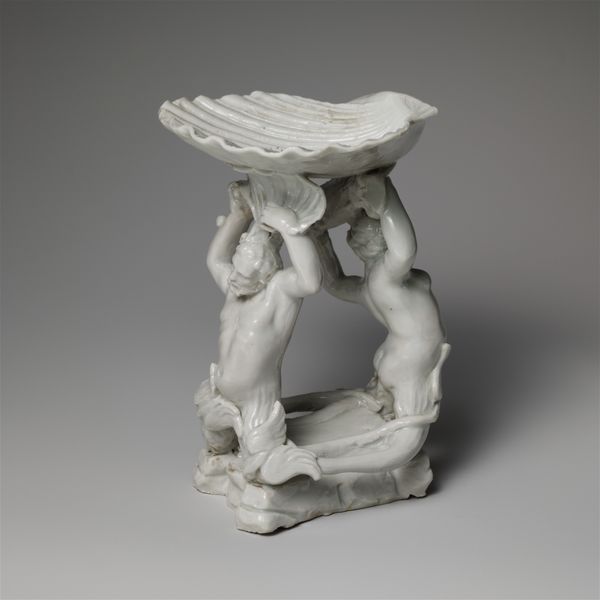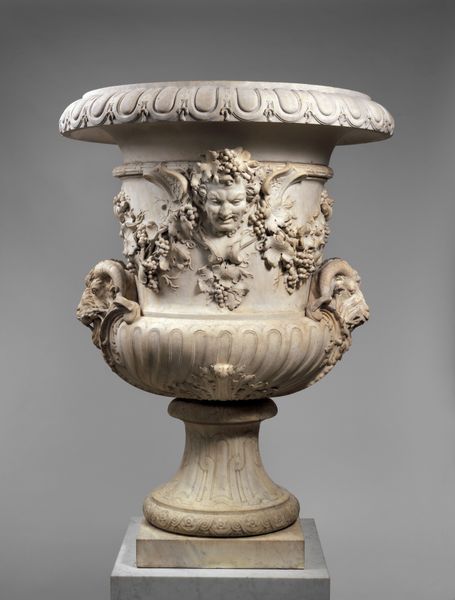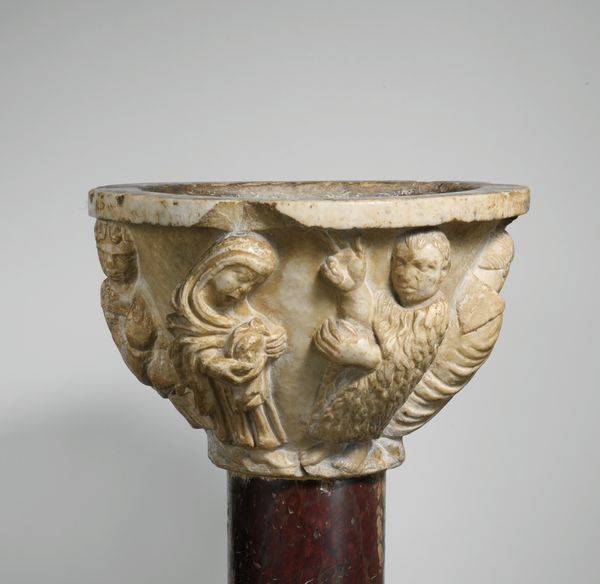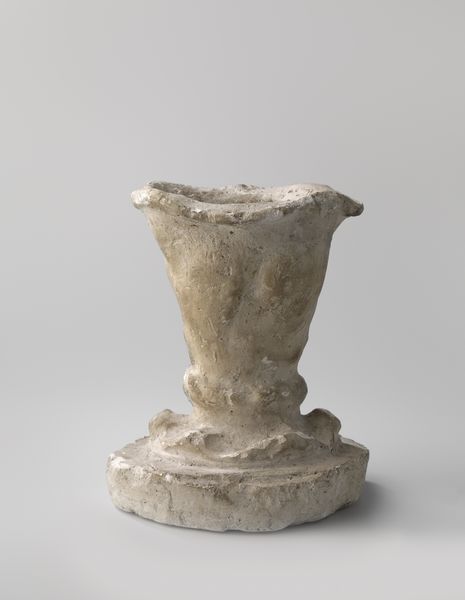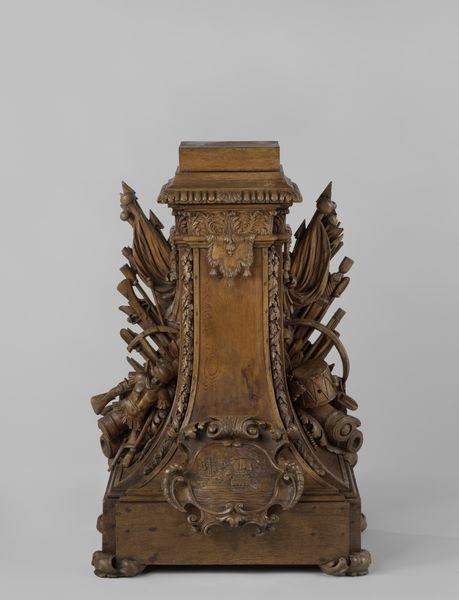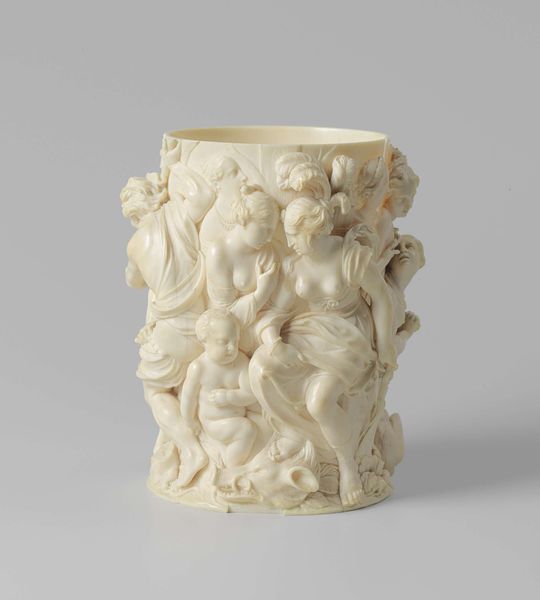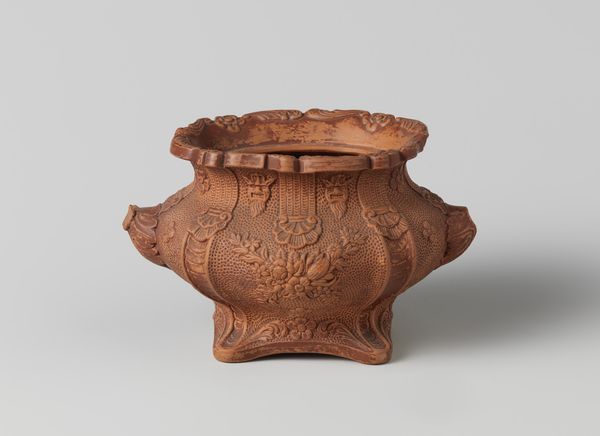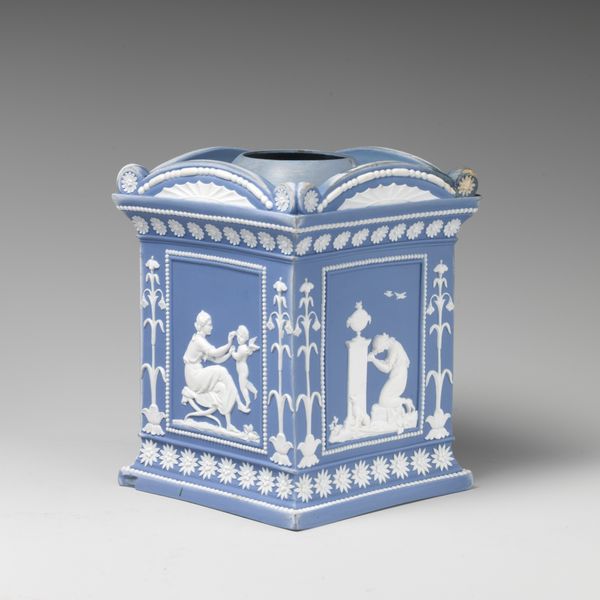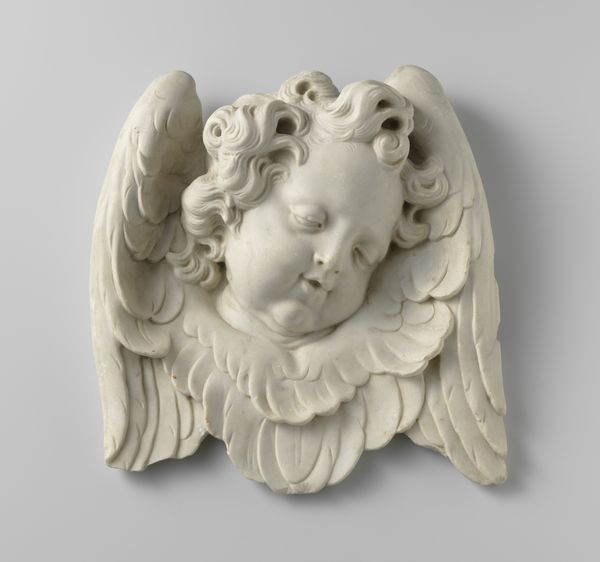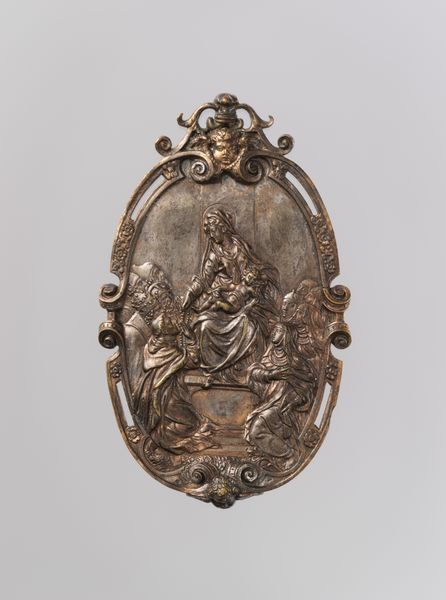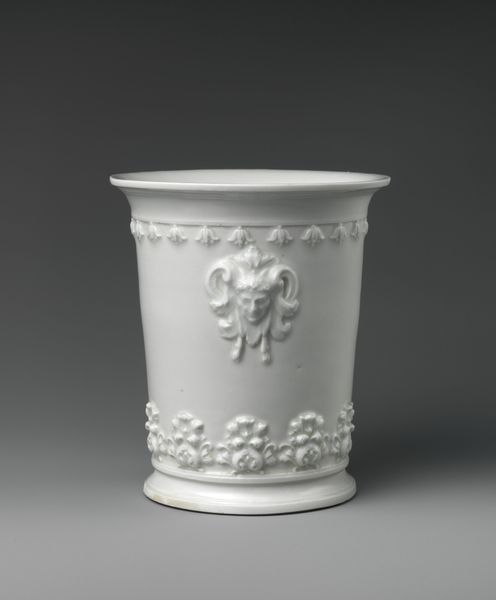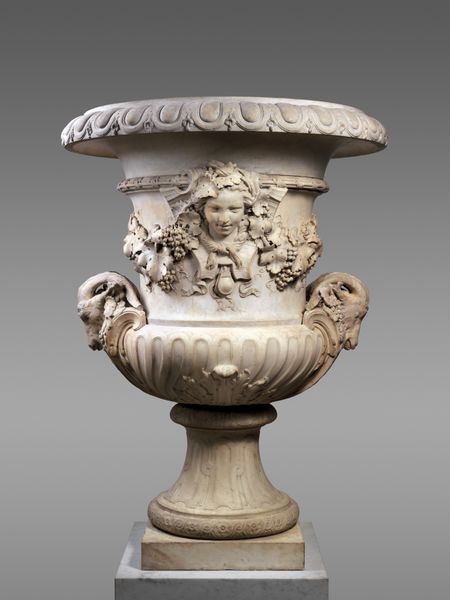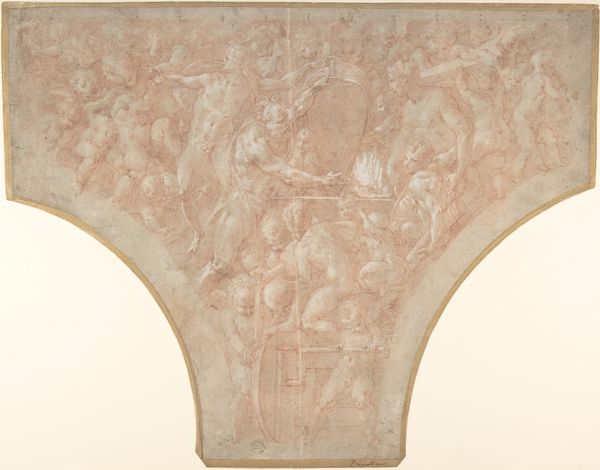
Copyright: Rijks Museum: Open Domain
Curator: What strikes me immediately is how grounded this relief feels despite its Rococo flourishes. It’s like elegance tempered by something solid. Editor: Indeed. We're looking at "St James the Less," a plaster carving made in 1773 by Walter Pompe. The Rococo style, popular then, is evident in those elaborate curves and shell-like motifs swirling around a central shield or frame. Curator: That’s it, the shell! It has such a seaside vibe! Does it feel a little unfinished to you, though? Like the sculptor was about to place a grand statement right in the center, a coat of arms maybe, but never did? It's a fascinating kind of potential, suspended there. Editor: Absolutely, and that void draws me into its historical context. Walter Pompe lived during a period of immense social and political change. While this piece embodies the decorative excesses of the aristocracy, one has to wonder if that empty shield unconsciously reflects the growing instability and the questioning of power structures at the time. It could also symbolize the individual's search for identity within established institutions. Curator: Ooh, I love that reading! You've unlocked a door. Or perhaps it’s just a practical blank slate – a space for whoever acquired it to stamp their own identity, literally or figuratively. Like art as a collaborative space, even across centuries. Editor: That interactive aspect is central to Rococo. Think of the salons of the period—spaces buzzing with intellectual debate, fashion, and aristocratic excess. This piece would likely have served as an ornament in such a room, sparking conversations and reflections of taste. It becomes part of the narrative, intertwined with real lives. Curator: I suppose that's why it whispers instead of shouts. It invites interaction. Even now. What is taste, really, anyway? Are we simply decorating our blank slates with the signifiers we admire? Or does the object itself provoke a genuine exchange of thought? Editor: Both, I'd argue, coexist. And what initially might appear as merely decorative holds profound historical and political undertones, if we only dare to explore beneath its surface. Curator: And to think, it all started with the shell. Amazing how art gets you thinking!
Comments
No comments
Be the first to comment and join the conversation on the ultimate creative platform.
